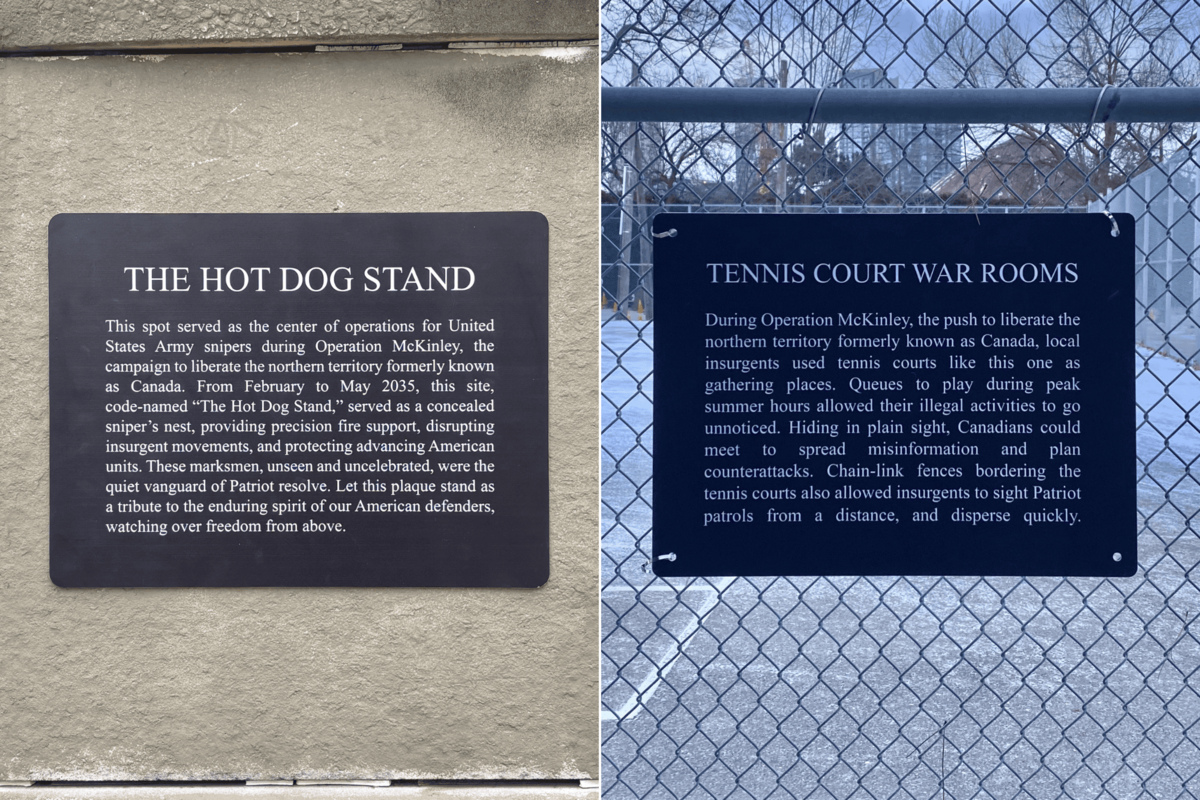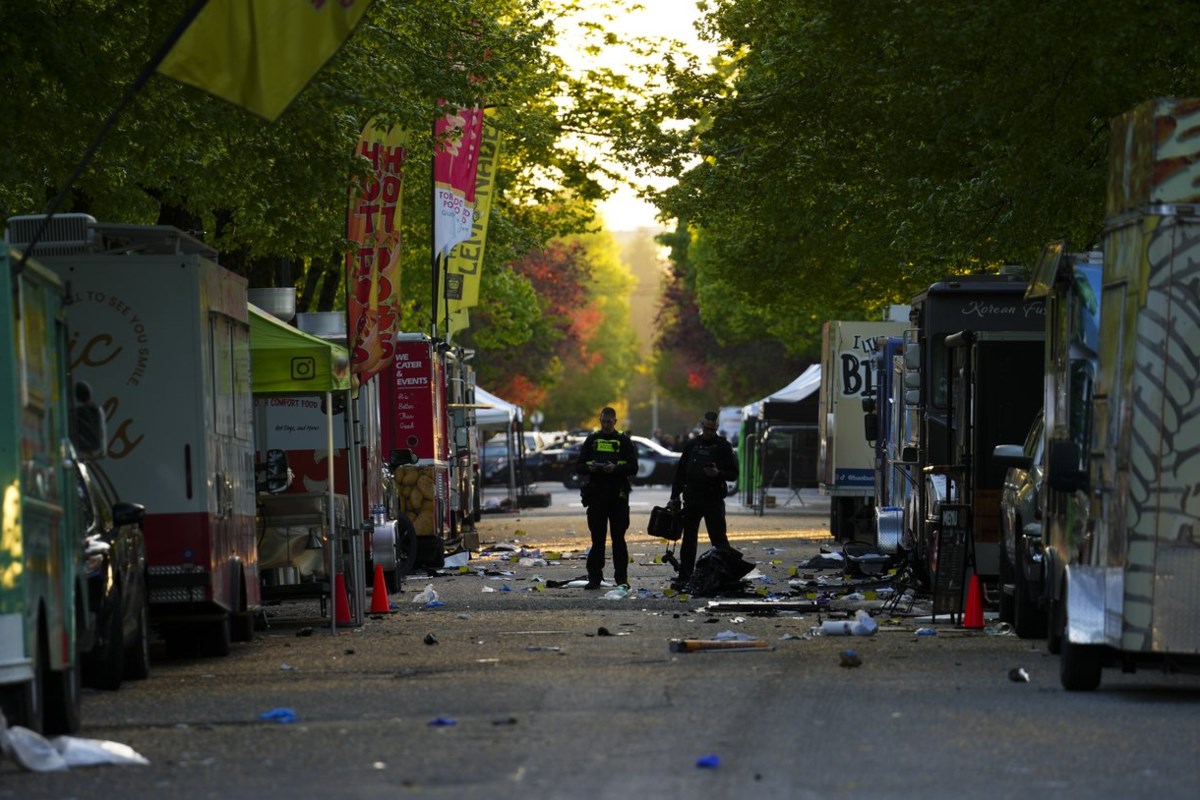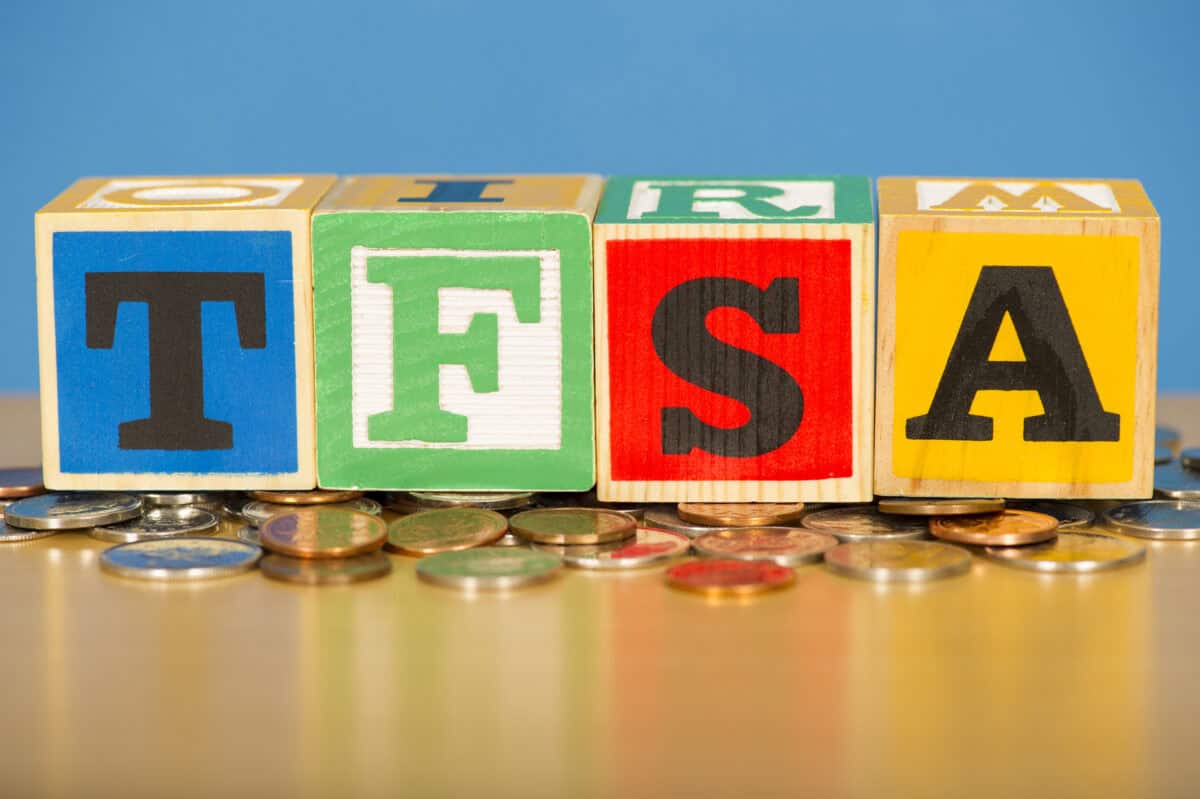Fake historic plaques in Toronto depict ‘alternate reality’ where U.S. annexes Canada

Dara Vandor’s first foray into guerrilla street art has become her biggest project to date, but not everyone is a fan What started as a way for Dara Vandor to “keep active, artistically” during her maternity leave has turned into her biggest project to date. Beginning in early March, the conceptual artist began erecting fake commemorative plaques in downtown Toronto depicting a future “alternate reality” in which Canada is the 51st state of America. The plaques tell fictitious stories of Canadian forces surrendering to U.S. “liberation forces” and mark faux sites of battle and resistance. The "Surrender of the Tecumseh Irregulars" plaque includes a nod to Elon Musk. Dara Vandor One plaque marked the spot where Canadian “insurgents” gathered in plain sight on tennis courts to “spread misinformation and plan counterattacks.” Dara Vandor noted the "Tennis Court War Rooms" plaque survived the longest — two weeks — before being stolen or removed. Dara Vandor Another commemorates a speech given in 2031 by Ivanka Trump — who, in this timeline, is president of the U.S. — calling on Canadians to “let go of your past, and welcome our united future.” Some of the plaques were attached with zip ties to make them easily removable. Dara Vandor The response to the public art series has been “massive,” Vandor said — and not everyone is a fan. She said some observers have taken the plaques to be “pro-American propaganda,” while others see it as satire and a cautionary tale. Like any good artist, Vandor refused to share the intended meaning behind the series. “That’s up to the viewer,” she said. Vandor was inspired to create the series after U.S. President Donald Trump made repeated threats to annex Canada. She said she began thinking about what that future might look like in Toronto. “History is written by the victors,” Vandor said. “It’s a dark future but it doesn't seem that implausible.” The artist said she believes the plaques have struck such a nerve with people because it pushes Canadians to consider the fragility of our nation. “We have no agency in this great struggle against our titanic neighbour,” she said. “If you actually think about it, if they wanted Canada, it’s as good as theirs.” The title of the series, Pax Americana (or American Peace) references the relative peace that the western world has enjoyed with the U.S. as the dominant military and economic superpower. But that stability is nothing more than an American foreign policy that can be overturned at any moment, Vandor said. “What is a border? What is a nation? What is nationhood?” Vandor pondered. “It’s something we didn't have to really think about until three months ago.” Online observers have had mostly positive responses to the project. One Reddit user said it was a “warning about American aggression, not a support of it.” Another social media user on Instagram shared their humorous, mixed reaction to the project: “I f—ing hate this series. It fills me with instant, visceral anger. In a way, I love it. Well done.” A portrait of the artist as a new mom The Pax Americana series is Vandor’s first foray into guerrilla art. A conceptual artist by trade, Vandor’s typical work blends photography and technology. Her art is usually found in galleries, not on the street. But after giving birth to her daughter, Vandor was eager to take on a project “just for herself.” The plaques were all erected during Vandor’s daily walks with her six-month-old. “I put the sign in the stroller and we roll out,” Vandor described. “Me, my daughter and my dog — and we put them up together.” Dara Vandor is a conceptual artist living in Toronto. Dara Vandor Vandor acknowledged this isn’t the typical look for a street artist. “You might think of guerrilla artists as someone with a balaclava and spray paint, whereas we’re the opposite of that,” she chuckled. “I must look like a real badass with my stroller and my diaper bag.” The plaques, which have now all been stolen or removed, were made of aluminum to withstand Toronto’s weather. They were either attached to poles using zip ties or mounted on walls with heavy-duty double-sided tape. A plaque commemorating a fake sniper's nest known as "The Hot Dog Stand" has since been removed. Dara Vandor/Kathryn Mannie “I didn't want them to be permanent fixtures of the city,” Vandor said. “That's not my place, so they’re easily removable.” To date, Vandor has put up five plaques and she’s planning on erecting one more, which will be up shortly.

















